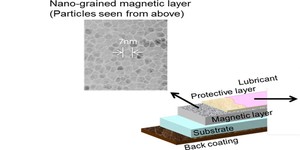
Intel and Micron have announced a breakthrough in their joint flash memory venture which, it is claimed, will lead to 10TB SSDs in the near future.
Announced just one day after Toshiba and SanDisk unveiled a 48-layer 128Gb module, Intel and Micron's latest creation seems at first more basic with just 32 stacked layers of NAND flash storage. A peek at the specifications reveals a distinct difference in density, however: Intel claims that its sampling hardware has achieved 256Gb capacities in multi-level cell (MLC) configuration and 384Gb in triple-level cell (TLC) configuration thanks to the world's first use in 3D NAND stacks of floating-gate cells - more commonly used in traditional planar layouts.
Using the new modules, the companies claim, a standard 2.5" SSD could store more than 10TB of data. For more compact designs, a 'gum stick-sized SSD' could store more than 3.5TB. Both designs would, Intel and Micron claim, include reduced cost-per-gigabyte, higher performance, improved endurance, and even lower power compared to today's planar NAND.
'Intel’s development efforts with Micron reflect our continued commitment to offer leading and innovative non-volatile memory technologies to the marketplace,' crowed Rob Crooke, senior vice president and general manager of Intel's Non-Volatile Memory Solutions Group. 'The significant improvements in density and cost enabled by our new 3D NAND technology innovation will accelerate solid-state storage in computing platforms.'
The companies have confirmed that sampling of the 256Gb MLC modules have begun today, with 384Gb TLC to follow later in the spring. Production has already begun initial runs, and mass production is due to begin before the year is out - handily beating its rivals projected mid-2016 date. Both Intel and Micron have confirmed that they will be among the first to launch products based on the new modules, planning SSDs for launch within the next year.
Announced just one day after Toshiba and SanDisk unveiled a 48-layer 128Gb module, Intel and Micron's latest creation seems at first more basic with just 32 stacked layers of NAND flash storage. A peek at the specifications reveals a distinct difference in density, however: Intel claims that its sampling hardware has achieved 256Gb capacities in multi-level cell (MLC) configuration and 384Gb in triple-level cell (TLC) configuration thanks to the world's first use in 3D NAND stacks of floating-gate cells - more commonly used in traditional planar layouts.
Using the new modules, the companies claim, a standard 2.5" SSD could store more than 10TB of data. For more compact designs, a 'gum stick-sized SSD' could store more than 3.5TB. Both designs would, Intel and Micron claim, include reduced cost-per-gigabyte, higher performance, improved endurance, and even lower power compared to today's planar NAND.
'Intel’s development efforts with Micron reflect our continued commitment to offer leading and innovative non-volatile memory technologies to the marketplace,' crowed Rob Crooke, senior vice president and general manager of Intel's Non-Volatile Memory Solutions Group. 'The significant improvements in density and cost enabled by our new 3D NAND technology innovation will accelerate solid-state storage in computing platforms.'
The companies have confirmed that sampling of the 256Gb MLC modules have begun today, with 384Gb TLC to follow later in the spring. Production has already begun initial runs, and mass production is due to begin before the year is out - handily beating its rivals projected mid-2016 date. Both Intel and Micron have confirmed that they will be among the first to launch products based on the new modules, planning SSDs for launch within the next year.

MSI MPG Velox 100R Chassis Review
October 14 2021 | 15:04








Want to comment? Please log in.